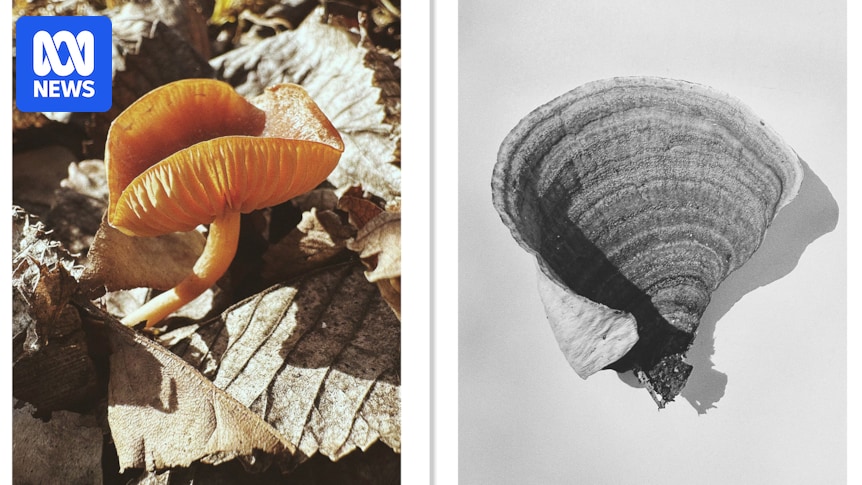Melbourne photographer and author Ying Ang was walking around inner-city gardens after her son’s school drop-off when she became so fascinated by the mushrooms she noticed underfoot that her 20-minute walks began to spiral into into four-hour rambles.
She developed an intense fascination with mushrooms and began photographing them.
“The magic thing about photography is that you don’t really know what something looks like photographed until you photograph it,” Ang tells ABC Arts.
Ang’s boundary-pushing work has garnered international acclaim. (Supplied)
It turned out that, through her lens, mushrooms had a lot to say.
“I find something very surprising about them,” Ang says.
“They’re almost like these little ‘pay attention to me’ signs in the world.”
Ang photographed mushrooms over eight months in 2024, and the resulting body of photographic work, Fruiting Bodies, launched at the prestigious Rencontres d’Arles photography festival in France earlier this month.
And it draws a strong connection between mushrooms and the female body.
Hidden strength
Ang’s compelling photographic series begins by confronting a struggle she considers common: women feeling they must cling to the fading remnants of their youth.
Ang invites her readers to explore the hidden stories that shape lives. (Supplied: Perimeter)
“Is that all we are — defined by what we once had? Or is there a deeper worth waiting to be uncovered?” she asks.
Ang says there is a “connection with lessons in the environment and lessons in feminism” — a school of thinking known as ecofeminism.
Using those notions as a foundation, she highlights the transient beauty of mushrooms, using them as metaphors for complex ideas around female beauty.
Female beauty is often considered fragile and something that diminishes with aging, Ang says.
She writes in Fruiting Bodies:
Here is how the world will try to make you small.
Here is how to stop it.
Here is what you do not have to endure.
Ang finds a common point between women’s experiences and the vast underground mycelial network that supports mushrooms and the unseen world; there, she says, there is hidden strength and resilience.
The value of a body
Beyond the women in her life, who are her “key inspiration”, Ang is inspired by authors such as Deborah Levy and Rachel Cusk and “the richness of their interior landscape”.
As a woman and a mother, Ang felt a deep curiosity about the stories her own body held within. “I mean, I’ve had a child, right? I’ve fulfilled my reproductive function, where is the value and function of my body?” she says.
Fruiting Bodies is an introspective journey, but it’s one designed to speak broadly.
Mushrooms, with their ephemeralness, are a reminder of the interconnectedness of all life forms, Ang says.
She’s also pushing back against the trend of fetishising mushrooms in artistic imagery, a common practice she encountered in researching her book.
“It’s this full phallic pulsing at the peak of its reproductive state,” she says.
Similarly, she argues that there is “a complete fetishisation of … our reproductive years as women”.
While Ang believes women’s worth is often tied to their youth and fertility, her work — by contrast — celebrates the value of women beyond these parameters, including their roles as storytellers, caregivers and vital links between generations.
In Fruiting Bodies, each mushroom image stands alone as a portrait, allowing readers to appreciate the delicate details and to find a deeper significance.
The book is not just a collection of photographs; it is a journey into the heart of what it means to exist, to be seen and to reclaim one’s narrative in a world that often overlooks the profound connections between life, death and everything in between.
“I wish for [readers] to discover a secret that perhaps they have always known,” Ang says. “I hope that people can meet me halfway as I introduce an idea, the beginning of a thread to be unravelled.
“I wish for [readers] to discover a truth about where our value is as a woman.”
Fruiting Bodies is out now from Perimeter Editions.

